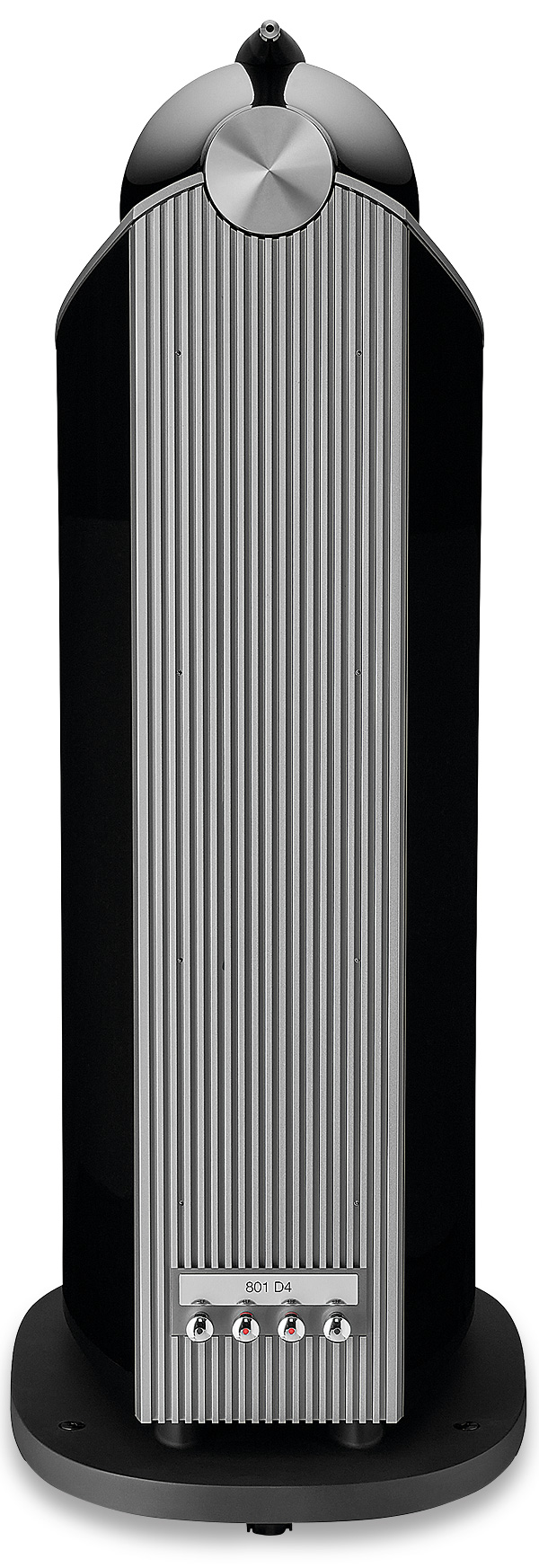B&W 801 D4 Loudspeaker Page 2
Also worth noting is that the magnetically-attached grilles provided for the bass and midrange units have less impact on the sound than any we have encountered, but have a twist – quite literally. When attaching them, it's necessary to rotate them to align the magnets, as otherwise they will fall off… So, it's a matter of offering them up, then rotating them slightly until the magnets abruptly 'grab'.
With the studio heritage of the 801 series – the original was swiftly adopted as a reference by Abbey Road – it seemed only fitting to commence auditioning with some classical music, in the form of the remarkable Octave Records two-volume set of Zuill Bailey playing the Bach solo cello suites [Octave OCT-0008; DSD64]. Instantly there was a marvellous sense of three-dimensionality, of the instrument in space. I was tempted to push up the level a little – the 801 D4s will take a lot of power, and play extremely loud with no stress – whereupon the presentation became even more 'real', from the sound of bow on string and the resonance of the body of the instrument plus, of course, the acoustic around it.
The superb recording was conveyed with remarkable presence and detail – but all to the benefit of the music, not as a distraction. These are not in any way speakers lending themselves to a quick listen: the 801 D4s draw you into the music, and just won't let go, so compelling is their presentation.

Thrilling Impact
A familiar test-track – the Jerry Junkin/Dallas Winds recording of the John Williams march from 1941 [At The Movies; Reference Recordings RR-142, DSD64] – thrilled from the off, with the distant percussion under the opening phrases in the woodwind resolved wonderfully. And when the bass drum kicks in, it does so with both serious conviction and absolute speed, the snap of snare-drums and the crispness of the tuned percussion set against the impact of the low bass, and the wide-open dynamics as the track builds piling on the excitement.
That mixture of growling low frequencies and absolute detail also serves well 'The Haunted Ocean' from Max Richter's Exiles [DG 00289 486 0445], the bass truly menacing and fully energising the room without ever seeming overblown or excessive, and still leaving plenty of space for the finely-detailed instrumentation above it.
Loading up Patricia Barber's latest album, Clique [Impex IMP7002; DXD], the entrance of her voice on 'Shall We Dance?' is astonishing in the intimacy of its focus – it just hangs in the room between the speakers, with the accompanying bass, brushed drums and piano delicious in their clarity. The warmth of the ambience is lovely, as is the way Jim Gailloreto's sax solo soars out of the mix, precisely located and with wonderful breathy reediness and the sense of the keys working.
Also sparkling in its intimacy is Anna Fedorova's new release, Shaping Chopin [Channel Classics CCS 43621; DSD128], her reading of the Three Mazurkas, Op.50, treated to that full picture of the scale and size of the piano. Every note, every touch is wonderfully clear, and there's such a persuasive impression of the instrument in the room, with the expression of the playing beautifully resolved.

Switching to the lush sound of Charlie Watts Meets The Danish Radio Big Band [Impulse! 0602557441932], the take on 'Paint In Black' has real depth to the sound of the massed forces. Here the solo guitar has great character, but above all Charlie Watts drives it with such restrained drumming, always leading the rhythms rather than simply cruising at the back. It's an understated, beautifully crafted track, and hugely impressive through these ultra-revealing speakers, with their controlled, tightly-resolved soundstaging and superb bite when required. When Charlie gets into an easy groove with 'You Can't Always Get What You Want', the speed of the big 801 D4s is much in evidence: the drumming is so laid-back, but so tight.
Serious Slam
By contrast, the big slam of the opening of Yes's 'Yours Is No Disgrace' [The Yes Album; Atlantic WPCR 15903, DSD64] just cannons out from the speakers. The complex keyboards and driving, grumbling bass line fuse with the drums to drive the track relentlessly, and those harmonies are wide-open, as are the words – for good or bad! Yes, the soundscape is huge here, and the low end from those two aerofoil drivers is both punchy and remarkably controlled. These speakers will also go scarily loud with enough amplification driving them, but they remain resolutely clean and clear – a fitting apex to B&W's latest 800 Series Diamonds.
Hi-Fi News Verdict
Not a match for low-powered tube amps, but driven firmly the new B&W flagships are capable of a sound as informative as it is vivid. They bring to life everything from driving rock to the most subtle of solo instruments and voices, with breathtaking insight into performance and music alike. Yes, they're demanding of both amplifier and system quality, but get it right and they will thrill and entice like almost no other.
























































